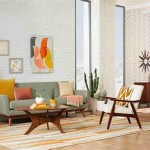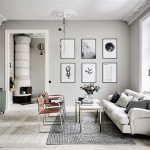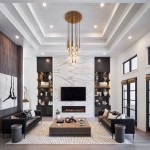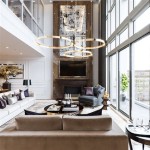```html
Pictures of Living Room Colors: A Comprehensive Guide
Selecting the appropriate color palette for a living room significantly influences the overall ambiance and perceived space. Color psychology plays a crucial role, impacting mood and influencing the room’s perceived temperature and size. Examining various living room color schemes and their effects is essential for creating a desirable and functional living space. Picture references are invaluable in this process, providing visual cues and illustrating how different colors interact within a real-world setting.
The availability of diverse paint options, furniture fabrics, and accent pieces demands a careful and coordinated approach to color selection. Understanding how colors blend, contrast, and complement each other is paramount in achieving a harmonious and aesthetically pleasing living room. Beyond personal preference, considering the existing architectural features and natural light exposure is also critical for a successful color scheme.
Understanding Color Psychology in Living Room Design
Color psychology suggests that different colors evoke varying emotional and psychological responses. For instance, blues and greens are often associated with tranquility and calmness, making them suitable for relaxation areas. These cooler tones can create a serene and inviting atmosphere, particularly beneficial in high-stress environments. However, excessive use of cooler colors can sometimes create a feeling of detachment or formality, requiring balance with warmer accents.
Conversely, warmer colors like reds, oranges, and yellows are often linked to energy, enthusiasm, and sociability. These colors can invigorate a space and create a welcoming atmosphere for social gatherings. However, an overabundance of warm colors, especially intense reds, can feel overwhelming or stimulating, possibly leading to restlessness or anxiety. The intelligent use of warm colors often involves strategic placement as accent walls or decorative elements, allowing their positive qualities to enhance the room without dominating it.
Neutral colors, such as whites, grays, and beiges, offer versatility and adaptability. These serve as excellent backdrops for highlighting furniture, artwork, and other decorative elements. Neutral palettes provide a clean and sophisticated look, making them ideal for modern and minimalist designs. While neutral tones can be perceived as bland or uninspired, they offer a blank canvas for adding personality through textures, patterns, and pops of color. The careful selection of undertones within neutral colors is crucial, as warm neutrals (with yellow or red undertones) create a cozier feel, while cool neutrals (with blue or green undertones) offer a more contemporary aesthetic.
Pictures demonstrating the application of these psychological concepts are invaluable. For example, images of living rooms incorporating soft blues and greens with natural wood elements and ample natural light illustrate the calming effect of these color choices. Similarly, examples of living rooms with pops of vibrant yellow or orange against a neutral gray backdrop showcase how warm colors can create focal points and add energy without overwhelming the space. The visual impact of these color schemes solidifies the understanding of color psychology in interior design.
Analyzing Popular Living Room Color Schemes
Several popular color schemes consistently appear in living room design, each offering a distinct aesthetic and emotional effect. Monochromatic schemes involve using different shades and tints of a single color, creating a cohesive and sophisticated look. This approach simplifies the design process and ensures a harmonious feel. However, it requires careful attention to texture and material to avoid monotony. Pictures of monochromatic living rooms often showcase the use of varying textures, such as velvet, linen, and wood, to add depth and visual interest.
Complementary color schemes utilize colors that are opposite each other on the color wheel, such as blue and orange or yellow and purple. This creates a vibrant and dynamic contrast, instantly drawing attention and injecting energy into the space. However, complementary schemes require careful balancing to avoid visual clashes. It’s often advisable to choose one dominant color and use the complementary color as an accent. Pictures of living rooms employing complementary schemes effectively demonstrate the balance achieved through the thoughtful distribution of colors and textures.
Analogous color schemes involve using colors that are adjacent to each other on the color wheel, such as blue, blue-green, and green. This creates a harmonious and soothing effect, similar to a monochromatic scheme but with more visual interest. Analogous schemes are often used to create a sense of tranquility and flow within the space. Pictures of analogous living rooms highlight the subtle transitions between colors and the cohesive aesthetic achieved through this approach.
Triadic color schemes involve using three colors that are equally spaced apart on the color wheel, such as red, yellow, and blue. This creates a bold and playful effect, suitable for more eclectic and adventurous designs. However, triadic schemes require careful planning to ensure that colors complement each other and do not clash. Pictures of triadic living rooms often demonstrate the use of one dominant color and two accent colors, creating a balanced and visually stimulating environment.
Pictures of living rooms utilizing each of these color schemes are crucial for understanding their unique characteristics and potential applications. Visual analysis allows for a more concrete understanding of how these schemes translate into real-world environments and helps individuals determine which scheme best suits their personal preferences and design goals.
Practical Considerations for Choosing Living Room Colors
Beyond theoretical considerations, several practical factors influence the selection of living room colors. The amount of natural light entering the room significantly impacts how colors appear. Rooms with ample natural light can accommodate darker and more saturated colors without feeling oppressive, while rooms with limited natural light may benefit from lighter and brighter colors to maximize illumination. Pictures of living rooms with varying degrees of natural light illustrate how different colors respond to different lighting conditions.
The size of the living room also plays a crucial role in color selection. Lighter colors tend to make a room feel larger and more open, while darker colors can create a cozier and more intimate atmosphere. In smaller living rooms, it’s often advisable to stick to lighter and brighter colors to maximize the perceived space. In larger living rooms, darker colors can be used to create a sense of warmth and enclosure. Pictures of living rooms of different sizes showcase how color choices can impact the perceived size and proportions of the space.
The existing furniture and décor should also be considered when choosing living room colors. It's important to select colors that complement the existing furniture and décor, creating a cohesive and harmonious look. If the furniture is neutral, the walls can be painted in a bold color to add personality and visual interest. If the furniture is colorful, the walls can be painted in a neutral color to create a balanced and calming effect. Pictures of living rooms with diverse furniture styles demonstrate how color choices can integrate with existing elements to create a unified design.
Furthermore, the overall style of the home should influence the color selection for the living room. A modern home may benefit from a minimalist color palette with clean lines and neutral tones, while a traditional home may benefit from warmer and more inviting colors with richer textures. Understanding the architectural style and design aesthetic of the home is essential for creating a cohesive and harmonious living space. Visual examples illustrating how different color palettes align with various architectural styles are valuable in this aspect.
Ultimately, choosing the right living room colors is a personal decision that should reflect individual preferences and lifestyle. However, considering these practical factors and examining pictures of various color schemes can help individuals make informed decisions and create a living space that is both aesthetically pleasing and functional.
```
30 Living Room Paint Colors Inspiration For An Inviting Space Beamin Moore

Living Room Paint Colors Ideas The Home

Best Living Room Paint Colors For 2024 Brock Built

7 Popular Paint Colors For The Living Room
.jpg?strip=all)
Two New Living Room Paint Colors Dream Green Diy

From The Pros Top 10 Living Room Paint Colors Decorilla Online Interior Design

These Two Living Room Colors Are The Perfect Combo Clare

The 13 Best Coral Paint Colors To Brighten Your Walls

The Best Living Room Color Ideas Out There Purewow

11 Cozy Living Room Color Schemes To Make Harmony In Your








